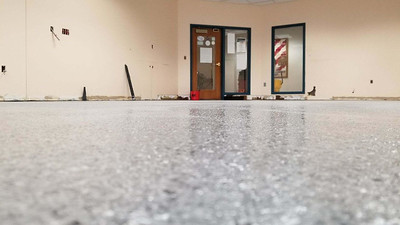The University of Wisconsin has announced that it will cease offering degree programs at its Richland Center campus. The decision raises an issue regarding the stability of community college funding there.
Richland Center, which had a peak enrollment of about 570 students prior to the pandemic, now serves just 10% of that number. UW will transfer programs currently offered at Richland Center to UW-Platteville, which is about 60 miles away.
As a cost-saving measure, in 2017, the State of Wisconsin merged 13 of its community college campuses with various University of Wisconsin campuses throughout the state. The hope was that the mergers would reduce administrative costs without sacrificing academic programs.
Unfortunately, the Richland Center merger with UW-Platteville failed to achieve this objective. Enrollment declined at Richland Center following the merger and bottomed out during the pandemic. There are currently just 13 full-time faculty members on staff at Richland Center.
Richland Center, WI is a rural area, approximately 60 miles northwest of Madison. Since the merger with Platteville, Richland Center has been unable to attract more students to the campus. Shifting to online delivery is not an option because the state of broadband access in rural Wisconsin will not support it. According to a letter Jay Rothman, the UW System president, sent to Tammy Evetovich, the interim Chancellor at Platteville, the system can no longer sustain Richland Center’s monetary losses.
Community college funding issue rises to the top
Community college funding strategies are all over the map in the United States. There is no one “tried and true” funding method to ensure that community colleges have the funding they need to continue operations.
In Wisconsin’s case, its community college funding model relies on a combination of performance, enrollment, student progress toward a degree, the number of degrees a program awards, and other factors like the concentration of STEM degrees, and the number of minority, low income, and adult students enrolled. Rural community colleges are unlikely to “succeed” using these criteria.
Achieving preferred outcomes is one way to set up a state funding formula, but it’s only half of the equation. The other half is the level of investment the state (or the locality) makes in a campus to help achieve these outcomes.
While Washtenaw Community College is in no danger of closing its doors, Wisconsin’s community college funding strategy does raise some interesting questions for WCC.
The WCC Administration must address the issue of falling enrollment. It’s not hard to see why community colleges are not an attractive option for students. Most two-year degrees do not offer enough economic reward to entice prospective students to enroll.
WCC has traded degree programs (which offer more flexibility and a larger and longer-lasting benefit to students) for certificate programs. Certainly, it takes less time to earn a certificate than a degree, but reward is commensurate with effort. The less a student puts in, the less a student gets out.
It’s time to change the strategy
Further, basing programs on what current employers “need,” is a stunningly foolish approach. It fully ignores the opportunity to build capacity that will attract new industries and new employers (with entirely different needs) to the area. This strategy slams the door on economic expansion in the community college district. It trades growth and expansion possibilities for treading water, and it relies on employers to make near-clairvoyant decisions about their business operations to achieve economic expansion.
So, what is the strategy and where is the investment for attracting students? How will the WCC Administration address the issue of low economic return on its dwindling number of degrees and its non-degree certificates? Instead of using the resources that our “rich community” has provided to accomplish these things, the WCC Administration is wasting time, money, and opportunity trying to cultivate side businesses like the Health and Fitness Center, and a hotel and conference center. The WCC Administration’s continued waste of the community’s resources will come back to haunt Washtenaw County.
The Washtenaw County taxpayers will eventually arrive at the same conclusion that Jay Rothman of the University of Wisconsin System did.
“There comes a time when financial pressure and low enrollment makes in-person, degree-level academic instruction no longer tenable.”
All the funding this “rich community” has provided to WCC over the last two decades has failed to accomplish a tenth of what it could have. When is it time to throw in the towel?
Photo Credit: Decorative Concrete Kingdom , via Flickr



























